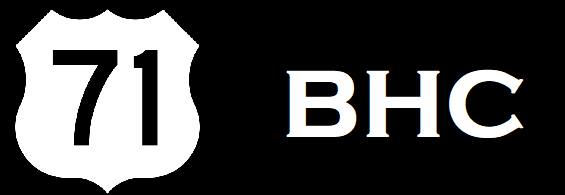
Built in 1868, the covered bridge is one of five left in the county. Has been listed on the National Register since 1981. Bridge closed until further notice. Details on the accident in the article above.
.




Mystery Bridge Nr. 197
The second of the two Snyder Park Bridges is also a mystery bridge. Yet the question when taking a look at the two is which one is the more glamorous of them? After looking at the unique Stone Arch Bridge in our last Mystery Bridge post, we have this one: The Snyder Memorial Bridge.
Spanning Buck Creek on Snyder Park Road, the Memorial Bridge is a combination of iron and steel bridge that has a little European flavor to it. According to Nathan Holth, the bridge was built in 1897 but it is unknown who had built it. It features an arch span that is half pony and half deck. It also has a Pratt pony truss span whose endposts are vertical and have ornamental castings.
Looking at it from an expatriate’s point of view, these have the features of a typical truss and arch bridge built in Germany. As reference, one needs not to look further than the Levansau Arch Bridge in Kiel in Schleswig-Holstein. Built in 1894, it was one of two bridges built by Hermann Muthesius over the Baltic-North Sea Canal, yet when it was built, it featured a combination through truss with Howe features, plus an arch span that was half pony-half deck. Its portal bracings were more ornate than this one at Snyder Park- as it featured brick arch portals with decorative features. A postcard of the bridge can be found here:

In 1952, the bridge was stripped down to the arches, eliminating the portals and the trusses. The bridge is still serving traffic, but its replacement is just around the corner and the structure is expected to be torn down by 2028.
Going back to the Snyder Memorial Bridge, the design of the bridge is definitely one that is typical of European bridges and like the truss bridges in the States, they too are becoming rare to find. What is known are the bridge railings that are outside the trusses and carry a wooden pedestrian path. These railings have an arched lattice design with vertical posts with decorative castings. According to Mr. Holth, the railings were patented by Chester B. Albree, who had a company based in Pittsburgh, PA. Established in 1893, Albree’s railings were used extensively in western Pennsylvania and were common on many structures throughout the US. Yet it is unknown whether he installed the railings to this bridge when it was built four years later.
As mentioned in the previous post, John and David Snyder created the 217-acre park that featured a combination of forests, ponds and even a golf course in 1895, yet they endowed a bond worth $200,000 to ensure of the park’s upkeep and paid $25,000 for the construction of the bridge. It is unknown who was the bridge builder and whether Mr. Albree constructed the railings for the bridge, the entire structure itself or if he had nothing to do with it.
And this is where you are up. What do we know about the bridge? Feel free to comment in the section below. The same applies to the stone arch bridge that was posted a day ago. Your bridge matters and we look forward to hearing about it.
David Backlin photographed the bridge in 2018 when it was closed to vehicular traffic. Pedestrians and cyclists however can use the bridge.
.

This was the last one in the series dedicated in memory of David Backlin. There will be more to come yet they will be integrated with those posted by the author and other bridgehunters and in its usual time slot of once a week on Mondays. We just want to showcase his work as a way of saying thank you for what you did as a bridge photographer and contributor. You will be missed.
Adventures with my books, health, and life in general!
Cogito Ergo Sum
Observing life on the edge
Lost In Michigan
Storied Lives on The Delaware River ~ Bucks & Hunterdon Counties
News, Views and Reviews For The Intellectually Curious
Autocad Download - Interior Design CAD Drawings,Free Autocad Blocks, Autocad Drawing,Sketchup models
Siouxland is more than a state of mind.
All The Stuff You Need from the Confluence of the Big Sioux and Missouri Rivers.
Bridging our past with the future by preserving our heritage in the present.
Bringing together professionals interested in the sustainable, strong and cheap technology of stone arch bridges.
Roadgeekery in the surburbs of Minneapolis, MN
Hop in and join the ride
The road goes on forever
Experiencing and exploring everything that makes small towns great.
Discovering the Untold Stories and Abandoned Wonders of the Urban Jungle
Bridging our past with the future by preserving our heritage in the present.
the site about Vulcan Iron Works Inc. and the pile hammers it made
PHOTOTHEQUE 1 MILLION DE CLICHES ARGENTIQUES
Stories and photos from Scotland
The Travel Sketching Blog
Discovering Amsterdam's Bridges: A Guide to the City's Iconic Landmarks
The modern adventurer -- growth, wellness, global citizenship
Come and join us!
Just bridges, tunnels, and ferries.
Some stories on my travels
This is a blog about my project of visiting every bridge over the Genesee River and what I learned about the history, structure, and natural surroundings of each bridge.
We'll cross that bridge when we get to it
A Group Blog of British and Irish Global History
Historic train bridges and abandoned lines
Tales about history and much more
painter | animator
To showcase my books and photos
Local Perspective | Global Outlook
A novelist with a passion for reading and traveling shares his view of the world and his adventures.
Bringing You the Wonder of Yesterday - Today